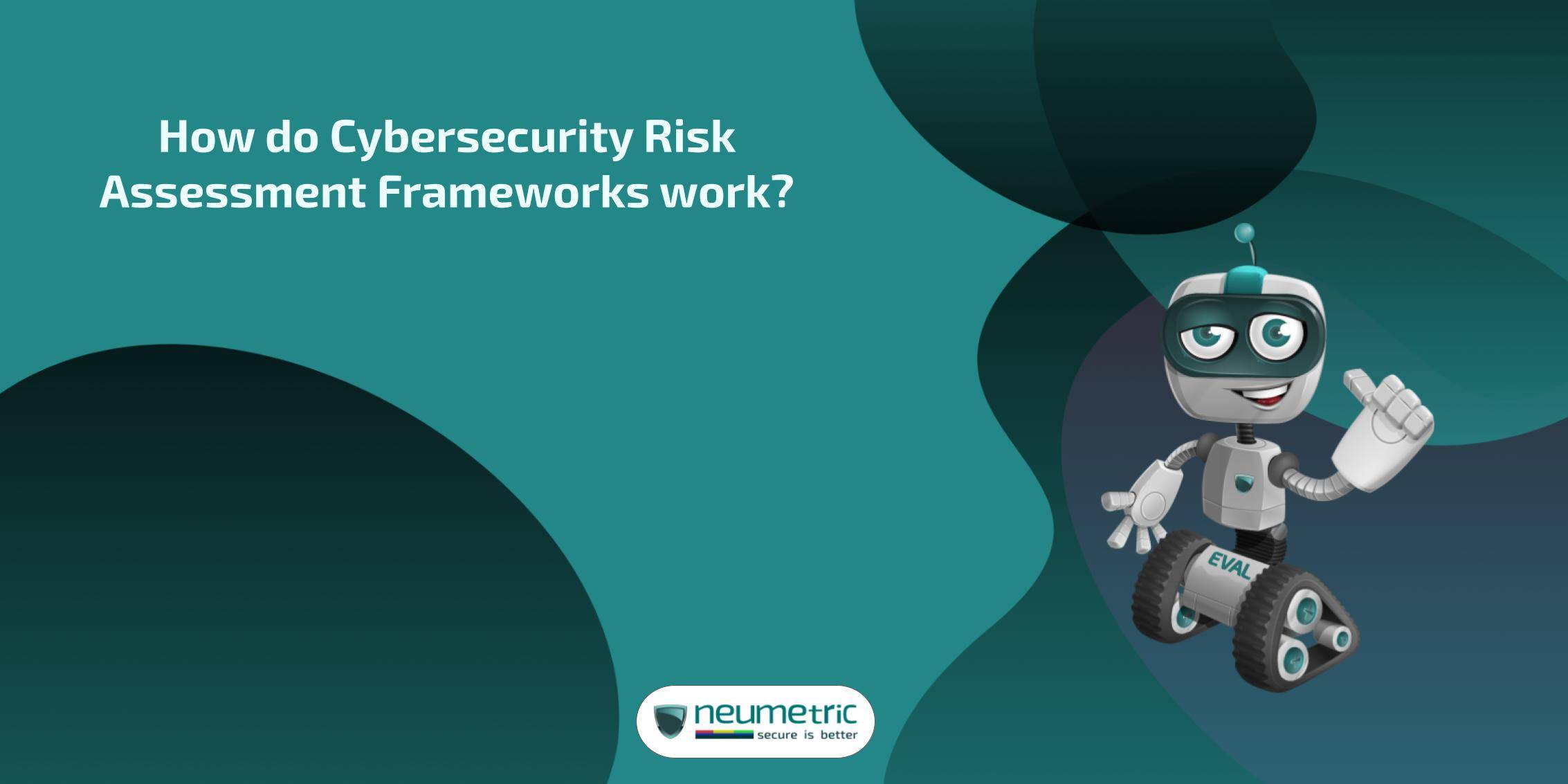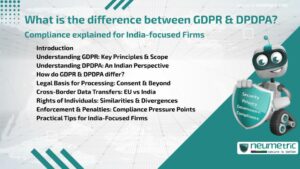Table of Contents
ToggleHow do Cybersecurity Risk Assessment Frameworks work?
Introduction
In a world where our daily lives seamlessly blend with the virtual, Cybersecurity Risk Assessment frameworks emerge as the silent guardians, diligently working to shield us from the ever-morphing threats that inhabit the digital realm. Imagine them as vigilant sentinels, employing systematic methods to navigate the complex landscape of risks & vulnerabilities, ensuring our digital landscapes remain secure & resilient.
At their core, risk assessment frameworks are the architects of our cyber fortresses. They represent systematic approaches meticulously crafted to assess & manage the diverse risks that could disrupt the harmony of our digital existence. These frameworks are not mere technological constructs; they are our partners in the ongoing quest for digital security. As we embark on this exploration, envision them as the wise mentors guiding us through the intricacies of threat identification, risk analysis & the strategic dance of risk treatment, providing a comprehensive shield against the perils that lurk in the digital shadows. Get ready to uncover the layers of these cyber guardians & understand how they weave the tapestry of protection in our interconnected world.
Scoping the Assessment
Alright, let’s dive into the nitty-gritty of how these cyber safeguarding maestros operate, starting with the crucial step of scoping the assessment.
- Defining Objectives: First things first, we need to set our goals straight. Defining objectives in the world of cybersecurity risk assessment is like plotting a course on a digital treasure map. We ask ourselves, what are we protecting & why? These objectives become our North Star, guiding us through the labyrinth of potential risks. Whether it’s safeguarding sensitive customer data or fortifying the integrity of critical systems, clarity in objectives is the compass that steers our risk assessment journey.
- Identifying Assets: Now, imagine our digital world as a bustling city & within it, there are invaluable treasures – your organization’s assets. Identifying these assets is akin to creating a detailed inventory of what matters most. It’s not just about the shiny gadgets but also the less flashy yet crucial components, like the integrity of your processes or the trust your customers place in your brand. These assets are the crown jewels we aim to protect, making asset identification a cornerstone in the cyber risk assessment ballet.
- Mapping Data Flows: Picture data as the lifeblood coursing through the veins of your digital kingdom. To safeguard your realm effectively, we need to map how this lifeblood flows. Data flow mapping is about tracing the journey of information within your organization. It’s understanding where it originates, how it travels & where it eventually rests. This meticulous mapping unveils potential vulnerabilities & points of exposure, providing us with a strategic advantage in fortifying the pathways that carry the essence of your digital kingdom.
Risk Identification
Now, let’s roll up our sleeves & get into the detective work of risk identification. Think of this phase as putting on our Sherlock hats & magnifying glasses to scrutinize the digital landscape for potential trouble.
- Recognizing Threats: In the vast expanse of the cyber wild west, threats can come in all shapes & sizes. It’s like spotting shadows in the dark – we need sharp eyes to recognize them. Cybersecurity risk assessment starts by identifying these threats, be it malicious hackers plotting in the digital shadows, cunning malware lurking in unsuspecting emails or even the subtle but potent risks posed by disgruntled insiders. Recognizing threats is about understanding the arsenal that could be aimed at your digital fortress.
- Pinpointing Vulnerabilities: Every castle has its weak points & in the digital realm, these are the vulnerabilities waiting to be discovered. Pinpointing vulnerabilities involves a thorough examination of your systems, software & processes to uncover potential entry points for threats. It’s like finding the loose bricks in your castle walls – the points where the defenses might crumble. This step requires a keen eye for detail, as vulnerabilities can often hide in the most unexpected corners of your digital infrastructure.
- Understanding Likelihood & Impact: Not all threats are created equal & this is where the plot thickens. Understanding the likelihood & impact of potential risks is akin to predicting the weather – a mix of science & intuition. How probable is it that a threat will materialize? & if it does, what kind of havoc could it wreak? Assessing likelihood & impact involves a delicate dance of weighing probabilities & imagining worst-case scenarios. It’s not just about knowing what could go wrong but also gauging how much chaos it could unleash upon your digital kingdom.
Risk Analysis & Evaluation
Now that we’ve uncovered the potential threats & vulnerabilities, it’s time to decipher their intricacies through the lenses of risk analysis & evaluation. Think of it as putting these risks under a microscope, examining them from different angles to make informed decisions.
- Qualitative Analysis: It involves a subjective assessment of the characteristics of a threat or vulnerability. We’re not crunching numbers here; we’re gauging the severity, the potential damage & the likelihood of the risk materializing. It’s the human touch in a digital world, where we assign values like low, medium or high based on the perceived impact & likelihood.
- Quantitative Analysis: In this phase, we crunch data & assign numerical values to the risks. How much financial loss could a particular threat cause? What’s the actual probability of it happening? It’s a mathematical approach to risk assessment, providing a concrete foundation for decision-making. Whether it’s dollars at stake or the potential downtime of critical systems, quantitative analysis quantifies the risks in a language that the business side of things can understand.
- Prioritizing Risks: Picture a to-do list with a twist – prioritizing risks is about deciding what needs our immediate attention. With both qualitative & quantitative insights, we can now create a hierarchy of risks. Some threats might pose a higher risk due to their potential impact, while others might have a lower probability of occurrence. Prioritizing risks ensures that we focus our resources & efforts where they matter most, like dealing with the metaphorical kitchen fires before they turn into infernos.
- Making Risk Treatment Decisions: Armed with a comprehensive understanding of our risks & their priorities, it’s decision time. Making risk treatment decisions is like orchestrating a strategy to fortify our digital castle. Do we tackle a high-risk vulnerability head-on, invest in additional security measures or accept a certain level of risk? These decisions involve a delicate balance between the potential impact on the business & the resources available for mitigation. It’s not just about eliminating risks but also about managing them in a way that aligns with the overall goals of the organization.
Implementing Controls & Monitoring
Now that we’ve sized up the risks & made our strategic moves, it’s time to roll up our sleeves & dive into the hands-on phase of cybersecurity risk assessment – implementing controls & keeping a watchful eye on the digital fortress.
- Selecting Safeguards: In this phase, we pick the tools & technologies that will fortify our defenses against identified risks. It includes firewalls, encryption, access controls & more – each playing a unique role in protecting our digital kingdom. The art lies in selecting safeguards that align with the specific nature of the risks we’ve uncovered, creating a robust shield against potential threats.
- Developing Treatment Plans: Developing treatment plans involves outlining the detailed roadmap for implementing the selected safeguards. It’s not just about installing software or configuring firewalls; it’s a holistic approach that may include employee training, policy updates or even structural changes. Treatment plans are the blueprint for turning our risk assessment insights into actionable steps, ensuring that our digital defenses are fortified at every level.
- Tracking Metrics: Tracking metrics is about monitoring the health & performance of the implemented safeguards. We set up metrics to measure the effectiveness of our security controls. Are our firewalls blocking malicious attempts? Is our encryption holding strong against potential breaches? These metrics provide real-time insights into the ongoing battle, helping us identify weaknesses, adapt our strategies & ensure that our defenses remain resilient.
- Reviewing & Iterating: The digital landscape is ever-changing & so are the threats it harbors. Reviewing & iterating is about staying nimble on our feet. Regular assessments & reviews of our security posture help us identify new risks or evolving threats. It’s a continuous feedback loop – we analyze the effectiveness of our safeguards, learn from any incidents or near misses & iterate our strategies accordingly. This adaptability ensures that our defenses evolve in sync with the dynamic nature of the cyber landscape.
Conclusion
In the dynamic realm of cybersecurity, risk assessment frameworks emerge as indispensable allies. Their structured approach acts as a guiding light, steering organizations through the labyrinth of potential digital threats with precision. By defining objectives, identifying assets & meticulously mapping data flows, these frameworks become architects of robust digital fortresses.
Yet, the journey doesn’t end here. The importance of continuous assessments resonates as a constant refrain. In an ever-evolving cyber landscape, where threats shape-shift & vulnerabilities morph, the need for perpetual vigilance cannot be overstated. Cybersecurity risk assessment frameworks, with their ability to adapt & iterate, underline the essence of an ongoing commitment to fortifying our digital domains. They are not mere tools; they are the guardians standing watch, reminding us that in the realm of digital defense, the quest is relentless & our defenses are only as strong as our commitment to continuous improvement.
FAQ
Why do we need cybersecurity risk assessment frameworks & how do they differ from traditional security measures?
In a nutshell, cybersecurity risk assessment frameworks are like our digital compass, helping us navigate the complex world of threats & vulnerabilities with a structured game plan. Unlike traditional security measures that might feel like a one-size-fits-all solution, these frameworks are more like personalized bodyguards. They don’t just throw up walls; they assess, adapt & strategize to fortify our digital kingdoms based on our unique challenges.
How often should organizations conduct cybersecurity risk assessments & what triggers the need for a reassessment?
Think of cybersecurity risk assessments as regular health check-ups for your digital infrastructure. Ideally, they’re not a one-off event but more like a recurring appointment. The frequency depends on various factors like changes in your digital landscape or the introduction of new technologies. A reassessment is often triggered by significant events – maybe a near-miss incident or a major system upgrade. It’s about staying proactive, not waiting for the alarm bells to ring before tightening our digital defenses.
Can cybersecurity risk assessment frameworks really keep up with the ever-changing nature of cyber threats?
Absolutely. These frameworks are not static rulebooks; they’re more like adaptable scripts for an ongoing thriller. The beauty lies in their ability to evolve. Continuous monitoring, regular reviews & iterative strategies ensure that they stay in sync with the dynamic dance of cyber threats. It’s not about creating an impenetrable fortress once & for all; it’s about having a vigilant digital guardian that grows & adapts alongside the ever-changing threat landscape.





